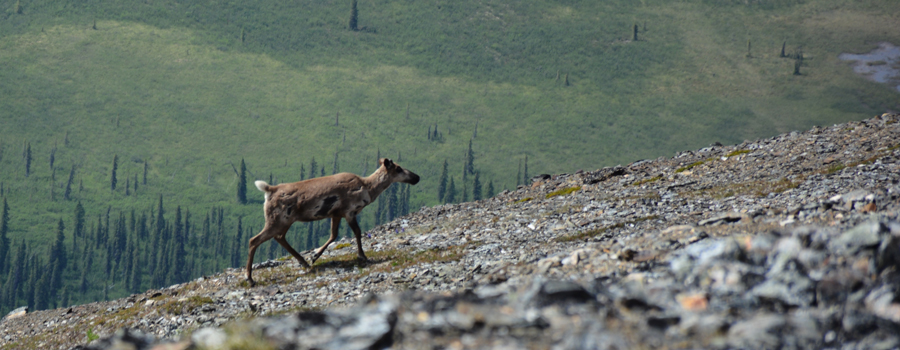
© Mark Scriver
Protecting species
Nááts'įhch'oh National Park Reserve
Some plants and animals within the park are considered species at risk based on ecological assessments conducted by federal and territorial agencies, such as the Committee on the Status of Endangered Wildlife in Canada (COSEWIC) and NWT Species at Risk. Risk factors evaluated in these assessments include habitat loss, small population size, high mortality or low reproductive rates, or other conditions that jeopardise the persistence of species across all or part of their ranges.
Animals, plants, and the ecosystems to which they belong within Nááts’įhch’oh National Park Reserve are afforded protection through limits on activities that may cause them disturbance or harm within park boundaries. For example, Transport Canada requires that pilots keep a respectful distance away from ungulates on mountain ridges, while visitors must pack out all garbage from their trip. Harvesting of plants and animals within the park is only permitted by local Indigenous traditional users.
The Northern Mountain population of woodland caribou, a species at risk found within the park and elsewhere in the Canadian north, has drawn significant attention in recent years. Across their wider range, they face threats from industrial development, habitat loss, and climate change. Woodland caribou are an intrinsic part of subarctic ecosystems and an important animal among Indigenous cultures in the region. Government agencies, Indigenous groups, and ecologists are working to find ways to safeguard their habitat and stabilise woodland caribou herds. Parks Canada monitors their population within Nááts’įhch’oh National Park Reserve – an important calving and summer grazing area – using a network of remote wildlife cameras.
Related links
- Date modified :